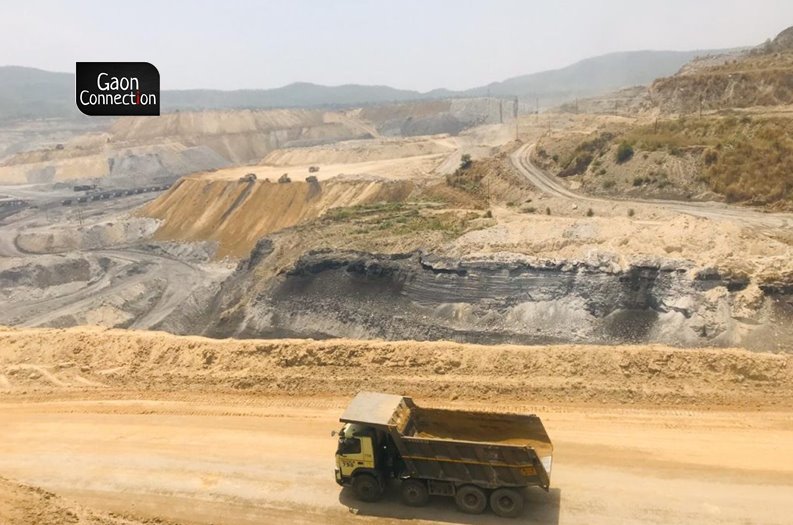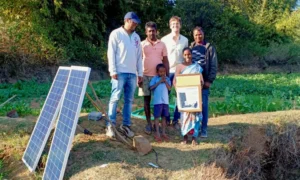A bare-all report prepared by the Wildlife Institute of India (WII) revealed that the Hasdeo – Aranya coal fields comprising of Tara, Parsa, Parsa East and Kente Basan, and Kente Extension (HACF) should be declared as ‘no-go areas’ and no mining should be carried out there because of their irreplaceable, rich biodiversity, and socio-cultural values.
The report titled Biodiversity assessment with emphasis on select faunal groups in the Hasdeo Arand Coal Field, Chhattisgarh, was submitted by WII, an autonomous institution of the Ministry of Environment, Forest and Climate Change under the Government of India, to the Indian Council of Forestry Research and Education (ICFRE), the apex research body in the national forestry system.
As far back as July 2011, the Ministry of Forests and Climate Change, Government of India (GoI) granted stage one permission for coal mining in 1898 hectares for the Parsa East Kente and Basan Coal block. The Forest Advisory Committee of the GoI had recommended the cancellation of this allocation.
However, a final clearance was granted in 2012 and mining began in 2013. Aggrieved by this order, Sudiep Shrivastava, a Chhattisgarh based lawyer, filed an appeal in the National Green Tribunal (NGT). The NGT suspended the work and ordered that the Ministry of Environment and Forest should take fresh opinion from the Forest Advisory Committee and also seek fresh opinion from ICFRE and WII. After this, in 2017, the Ministry issued the approval of Kente Extension on condition that reports on biodiversity of Hardeo Aranya coal fields would be sought from both the institutions (ICFRE and WII).
“Despite so many red-flags, the mining process is still being initiated in Hasdeo Aranya coal fields. The WII report has bared it all and despite that efforts were made to suppress the findings of the report. All the environment cautions, government’s guidelines, the danger to the rich biodiversity were bypassed and mining was initiated to promote the interest of a few industrialists,” Alok Shukla, convenor of Chattisgarh Bachao Andolan told Gaon Connection.
#Hasdeoarand क्षेत्र में WII के द्वारा किये गए अध्यन रिपोर्ट में साफ लिखा है कि PKEB कोल ब्लॉक के बाहर पूरे हसदेव अरण्य क्षेत्र को No Go घोषित किया जाए। नई खदान को अनुमति देना छत्तीसगढ़ में मानव हाथी द्वंद को इतना विकराल बना देगा कि फिर सम्हालना मुश्किल है।#savehasdeo (1/2) pic.twitter.com/l8QR9ExXbW
— Alok Shukla (@alokshuklacg) November 22, 2021
As per the estimates of the Indian Bureau of Mines, the reserves of coal in the Hasdeo Aranya forest amount to 5179.35 million tonnes of coal. The Hasdeo coalfield is spread over an area of 187,960 hectares.
Despite long-standing protests by residents and wildlife activists, the Chhattisgarh government, in July earlier this year, approved the auction of 17 coal blocks which also include the coalfields in the Hasdeo Aranya forest. The move had reignited the protests against mining.
A month ago, on October 23, Gaon Connection reported that as many as 350 villagers from the districts of Sarguja and Korba had marched 300 kms for 10 days to reach the state’s capital, Raipur, in order to protest against the ‘illegal’ acquisition of coal mines in the Hasdeo Aranya forest area.
Also Read: Explained: Why are hundreds of tribal villagers marching 300-km to meet the Chhattisgarh Governor
Findings of the report
The impact assessment was done for the Hasdeo-Aranya coal field comprising Parsa, Parsa East and Kente Basan (PEKB), Tara Central and Kente Extension coal blocks, as per the report. It noted that out of the four coal blocks mentioned, only PEKB is currently operational.
The report also revealed that the PEKB coal block is habitat to rare, endangered, and threatened fauna. It added that the biodiversity assessment of HACF has ‘significant conservation value.’ It suggested that since the PEKB block is already operational, the mining operation may only be permitted there. The other areas in HACF and the landscape surrounding it should be declared as ‘no-go areas’ and no mining should be carried out.
The report mentioned the local communities, predominantly tribal, in HACF that are closely dependent on forest reserves with over 60 to 70 per cent of their total annual income coming from forest-based resources.
Also Read: Mining in Chhattisgarh forcing elephants to look for a home in Madhya Pradesh
The Human- Elephant Conundrum
The report noted that the area witnesses the loss of 60 human lives every year due to elephant-human conflicts. In addition to loss of human lives, crop loss and damage to property due to the conflict are also severe. The increasing levels of such conflicts have resulted in considerable public resentment against the management and elephant conservation as a whole, the report added.
As per the report, one per cent of elephants in the country are in Chhattisgarh while 15 per cent of human casualties due to elephant-human conflict take place in the state. It pointed out that if coal mining begins in one place, the elephants are forced to move away from there which gives rise to elephant-human conflict in other areas. In such a situation, the opening of a new mine in the Hasdeo Aranya coalfield area will fuel the human-elephant conflicts and it might become difficult for the state to handle.
What do the officials say ?
Calling this a ‘very tricky issue’, Prem Kumar, the Forest Secretary at the Department of Forest, Chhattisgarh told Gaon Connection, “I cannot comment right now since it’s a policy decision and I am not competent to dwell upon that. Let the report be dispatched to the Ministry, it will be discussed at various forums and the final decision will be taken after going through it.”
A report by Wildlife Institute of India substantiates the stance of No-Go which is the only way to save Hasdeo region. I wish that these suggestions are implemented as policy decisions as had been done by UPA and @Jairam_Ramesh ji. pic.twitter.com/krSn7DCuhw
— T S Singhdeo (@TS_SinghDeo) November 22, 2021



















